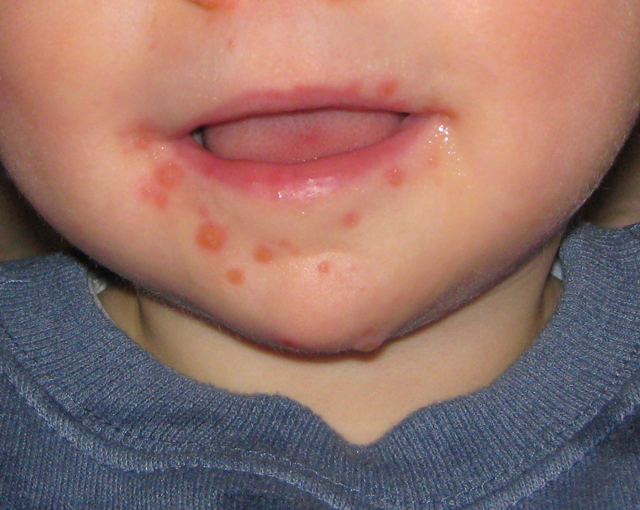Many of the 52 mysterious childhood deaths in Cambodia are linked to enterovirus 71(EV-71), which causes hand foot and mouth disease. The EV-71 virus can cause a particularly aggressive form of hand foot and mouth disease, leading to severe complications in some patients. The mystery illness has so far made over sixty children ill, all of whom had to be hospitalized – 52 of them have died, says the Cambodian Ministry of Health.
The World Health Organization (WHO), which is helping investigate what is causing these deaths, says that patients range in age from three months to 11 years – the majority of them are under three. WHO added that the male:female ratio is 1.3:1.
In the majority of cases, patients had died before samples could be taken and sent to laboratories for analysis. All samples are currently being sent to the laboratories at the Institut Pasteur du Cambodge.
Apart from the hand foot and mouth disease-causing enterovirus 71, lab results have shown a number of dengue and streptococcus suis infections. Fifteen of 24 samples already tested came back positive for enterovirus 71.
WHO stressed today that none of the patients has been infected with bird flu (H5N1), SARS or Nipah.
Scientists working for Ministry of Health of Cambodia, WHO, CDC (Centers for Disease Control and Prevention, USA), and the Institut Pasteur du Cambodge, say the investigation is still underway. Experts are matching clinical, laboratory and epidemiological data; they should have a conclusion within the next few days.
WHO investigation head, Dr. Nima Asgari, said today:
“As far as I’m aware, EV-71 was not identified as a virus in Cambodia before.
We are a bit more confident. We are hoping that we can come up with something a bit more conclusive in the next day or so.
HFMD (hand foot and mouth disease) is a common infectious disease that affects young babies and children. Typical signs and symptoms include painful mouth blister-like sores (herpangina), a rash with blisters on the hands, feet and sometimes the buttocks, and fever.
HFMD is a mouth disease caused by viruses belonging to the Enterovirus group (genus), which includes echoviruses, coxsackieviruses, polioviruses and enteroviruses.
- Coxsackievirus A16 – this is the most common cause of hand foot and mouth disease in the USA. Experts say that other coxsackieviruses have also been linked with the disease. When caused by coxsackieviruses , HFMD is usually a mild, self-limiting disease with hardly any complications.
- Enterovirus 71 (EV-71) – less common, but also associated with hand foot and mouth disease. This is a more virulent strain and is more likely to cause complications in certain groups, including death.
Hand foot and mouth disease tends to affect children under the age of ten years. Signs and symptoms usually appear from three to seven days after infection.
The disease usually starts with:
- Malaise, fever, sore throat, and poor appetite
- A couple of days later painful blister-like sores develop in the mouth. They start off as small red spots. The blisters are usually found on the tongue, inside of the cheeks and tongue. Lesions may also appear around the skin surrounding the mouth.
- Over the next couple of days, a non-itchy rash develops on the palms of the hands and soles of the feet (sometimes buttocks and/or genitalia too).

An 11-month old male with lesions caused by hand, foot and mouth disease
Many children may have HFMD and experience no symptoms, or just have one of them. In a minority of patients, the child may develop a brief febrile illness with mixed neurological and respiratory symptoms, and serious complications.
How is hand foot and mouth transmited? – the disease is spread from human-to-human by direct contact with throat or nose discharges, fluid from the blister, saliva, or infected feces. A patient is most contagious during the first week of illness – however, infected people may transmit the virus to others for several weeks.
HFMD is not transmitted from animals to humans, of vice-versa.
Hand foot and mouth disease has nothing to do with the animal disease called foot-and-mouth disease.
There is no current treatment specifically for HFMD. The child should drink plenty of fluids, and may need treatment for some of the symptoms. WHO says doctors should avoid treating patients with steroids.
Written by Christian Nordqvist